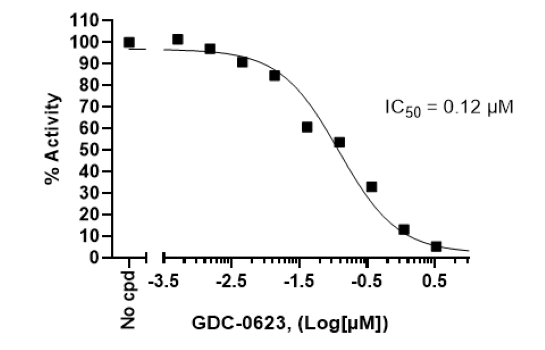Chemi-Verse™ MEK1 Kinase Assay Kit
The Chemi-Verse™ MEK1 Kinase Assay Kit is a luminescent assay designed to measure MEK1 (dual specificity mitogen-activated protein kinase kinase 1) kinase activity for screening and profiling applications using ADP-Glo™ as a detection reagent. The assay kit comes in a convenient 96-well format, with enough purified recombinant MEK1 kinase, kinase substrate, ATP, and kinase assay buffer for 100 enzyme reactions.
- ADP-Glo™ Kinase Assay (Promega #V6930)
- DTT (Dithiothreitol), 1M, optional
- Microplate reader capable of reading luminescence
- Adjustable micropipettor and sterile tips
- 30°C incubator
MEK1, also known as dual specificity mitogen-activated protein kinase kinase 1 or MAP2K1, is part of dual-specificity protein kinase family. MEK1 activates ERKs (extracellular signal-regulated kinases or MAPs) in response to several extra- and intracellular signals, and it is thus involved in cell proliferation and differentiation via regulation of transcription. MEK1 can be seen as the gatekeeper of ERK1/2 activity, offering a unique opportunity for inhibitors to act on all the downstream members of the ERK pathway. MEK1/2 has a very unique hydrophobic pocket which allows for binding of non-ATP competitive allosteric inhibitors, disturbing the formation of RAF (proto-oncogene serine/threonine-protein kinase)-MEK complexes or MEK phosphorylation. Inhibitors for MEK1 are currently used in combination with B-RAF1 inhibitors for the treatment of B-RAF-mutant melanoma. Further studies are required to design inhibitors that act mainly in abnormal tissues, as MEK1 is also expressed in normal cells, and to bypass resistance mechanisms.
Caunt C., et al., 2015 Nature Reviews Cancer 15: 577-592.


